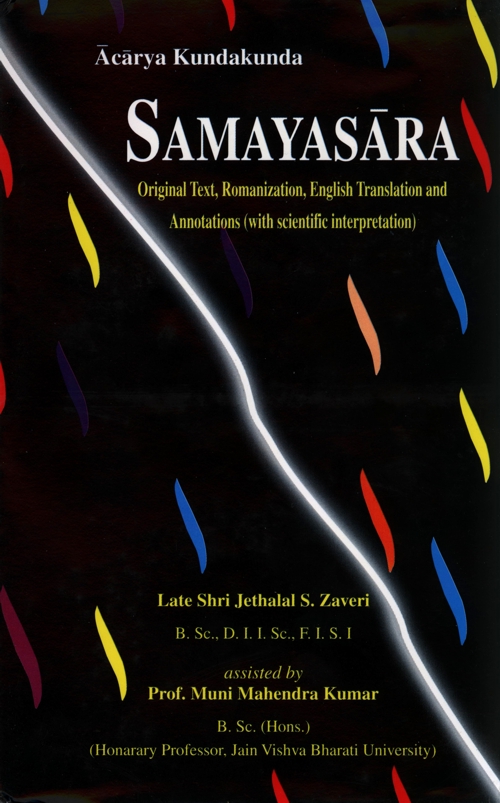
vavahāreṇa du ādā karedi ghaḍapaḍaradhādidavvāṇi.
karaṇāṇi ya kammāṇi yu ṇokammāṇῑha vivihāṇi..30
(Vavahāreṇa du) According to the empirical aspect (iha) in this [worldly life] (ādā) the soul (karedi) is identified as the producer of (ghaḍapaḍarahādi davvāṇi) articles such as a pot, a fabric, a chariot etc. (ya karṇāṇi) and the sense-organs (vivihāṇi kammāṇi) as well as various types of karma (ya) and (ṇokammāṇi) the body.
Annotations:
Earlier we have already stressed the non-absolutist reality of Jains according to which the truth is free from all absolutism. Having vigorously emphasized the transcendental aspect of causal relationship, the author, lest the reader may become convinced that this is the absolute truth, hastens to state the other side of the coin—the empirical aspect of causal relations—psycho-physical relationship.
Worldly or empirical aspect (vyavahāra naya) is of two main types: (a) sadbhuta vyavahāra and (b) aśadbhutu vyavahāra. The former is applicable to the intrinsic qualities while the latter implies the importation of alien qualities. Each of these two is, again, divided in two sub-types: (a) Upacarita-metaphorical application sanctified by popular usage and convention and (b) Anupacarita—has no metaphorical and transferred import. Thus finally we have lour sub-types of empirical aspect:
- Anupacarita-sadbhuta-vyavahāranaya—It identifies the genuine and intrinsic attributes with the substance in which they inhere. For instance, knowledge, as a characteristic (innate) attribute of soul, is sadbhuta and being free from figurative application is anupacarita.
- Upacarita-sadbhuta-vyavahāranaya—It differs from the first because the epithet is figurative and transferred. For instance to speak of an object as a modification of knowledge is only figuratively true in the case of external objects. These, being material in nature, are devoid of consciousness and yet as objects of knowledge may be described as modification of jñāna-consciousness. What intrinsically belongs to the self is transferred to its object because of the relation brought about by the process of knowledge. [1]
- Anupacarita-asadbhuta-vyavahāranaya—It identifies the self with some alien properties. For instance consideration of one's own body as one-self which is generally done in worldly life. It is because the body (physical or karma) is an alien substance (matter) but it is free from figurative implication as the statement "this is my body" or "I am this (body)" are sanctified by the intimate interrelation that exists between the body and the self.
- Upcarita-aśadbhuta-vyavahāranaya—Popular identification of the self with other persons and physical objects such as kith and kin, ornaments, land, house etc.—is neither intrinsic nor free from figurative transfer. To call them one's own is possible in a figurative sense. Each person is distinct from and alien to the others though all, by coexisting together, may partake of common environment and enter into definite relations. Popular identification with the self is therefore a figurative and transferred predication.
In the above verse these subtypes of vyavahāranaya are depicted; pot, fabric, chariot are all external alien objects. They are, no doubt, popularly produced by someone and are owned by someone but only in upacarita-asadbhuta-vyavahāra aspect. Similarly, sense-organs, karma (karmic body) as well as physical gross body are all produced and/or owned only in one of these four aspects.
From the transcedental aspect, all this-the entire popular convention which sanctifies the identification of alien things or persons with self—is nothing but delusion. Nevertheless Jains accept the fact as an empirical reality truth and not absolutely false or mere imagination. Methodology of naya is not merely a matter of theoretical interest but a very useful tool for the aspirants for apprehending and understanding the extremely complex nature of Reality.
 Jethalal S. Zaveri
Jethalal S. Zaveri
 Prof. Muni Mahendra Kumar
Prof. Muni Mahendra Kumar

